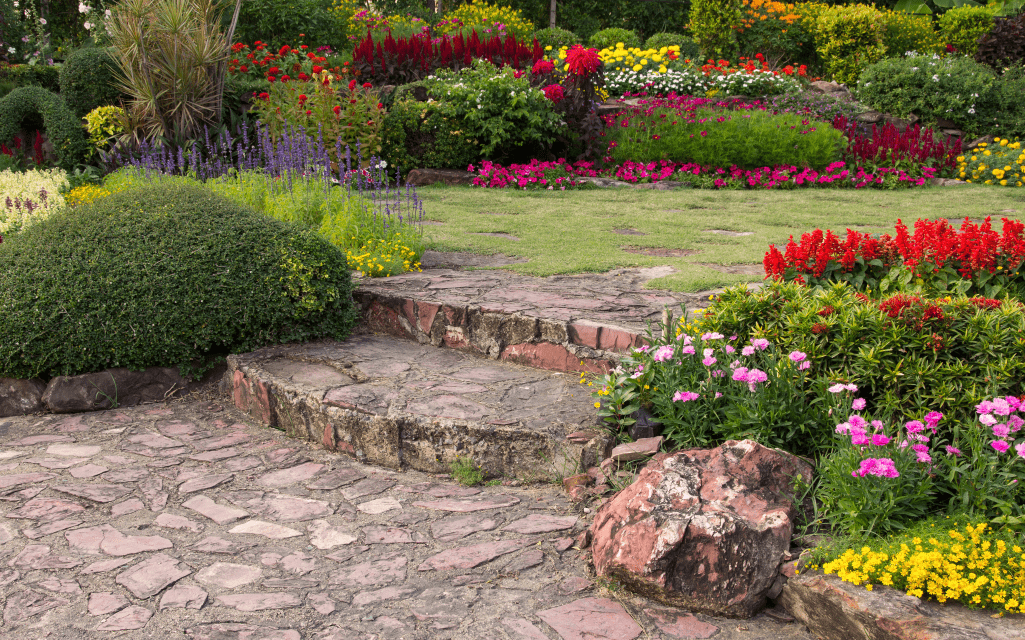Whether you are a beginning gardener or a complete green thumb, not only is it enjoyable to think about your yard’s lawn and plants but also to consider ways to provide your outdoor spaces with some flair through the use of various kind of decorative items. A couple of carefully chosen pieces can add a lot of interest to even the plainest or smallest space, and make you want to spend even more time outdoors in your yard on a daily basis. Keep reading to get some helpful tips on how to add some flair to your garden decor.
Set A Budget And Make Your Plan
The first thing you need to do to decorate your garden is to create a plan for what you would like to accomplish. No matter how small or large your outdoor space is, it is useful to consider such thing as what you would like each space to achieve in terms of its effect or functionality, as well as the contour of your land. You could end up with a strange combination of things that don’t work well together, or fail to accomplish your goals or achieve the look you want if you don’t set aside the time to do some planning then put your plan in place.
Failing to plan may also result in you spending more money than you want to on your garden decorations. Although you might only spend $50 or $100 here and there, those amounts can add up quickly. Therefore, it really pays to get your budget set before you start purchasing items so you can track your expenses.
Match the Exterior and Interior Style of Your House And Your Personality
As you are planning your decor for your property, it is essential to try to match the exterior and interior of your home to ensure that the style of both is complimentary. It is also important to make sure that your garden decor matches your personality.
It is also a good idea to consider your home’s architectural style, the colors on the building’s exterior, and the interior decor of your home so that you can match your new purchases with them. When the same type of look is carried from the inside of your home to the outside and landscaping, it will create a home that has a cohesive and harmonized appearance. You can even match your outdoor art to your inside art with Outdoor Art Pros.
Choose Items That Are Suited For Outdoor Use
When selecting items for your garden make sure that they are suited for using outdoors. Although you might fall in love with a certain piece, there is no use spending money on it if after some time it just gets moldy, decays, rusts or falls apart and becomes unattractive after being outdoors in the weather.
If you would really like to add an item to your garden that isn’t suited for outdoor use, it might be possible to weatherize it. For instance, there are some pieces are made out of traditional wicker, instead of all-weather wicker that you can spray a marine varnish on to help them hold up to the elements better.
Choose Environmentally Friendly Items
Finally, if you are like many individuals these days, you probably want to choose garden decor items that are as environmentally friendly as possible. That can involve selecting eco-friendly items made out of sustainable materials as well as ming use of Earth-conscious production methods, and sourcing reusable, recycled vintage or antique items.
It can be lots of fun shopping for items that have been done up, reclaimed, or been around for centuries or decades. When you select second-hand, instead of new products, it can provide your garden with more flair as well since it ensures you are not using the same items that many other places are.
Get creative with the items you are using in your garden and how you incorporate them. For example, you can repurpose an old drinking fountain into a planter and add color to it along with some nice succulents; you can take an antique fishing creel and turn it into an outdoor storage basket to put gardening supplies or umbrellas in, or it can be used as a planter for shrubs.
Some other ideas include providing your garden areas with older items such as aged birdbaths, iron baskets, grates, metal vent covers, lanterns, watering cans and whatever else piques your interest. You might also want to consider repurposing a worn, old garden bench as a place for container plants; using a salvaged window as a cold frame for raising seeds and sprouts; or a broken large pot as the base for a table.



